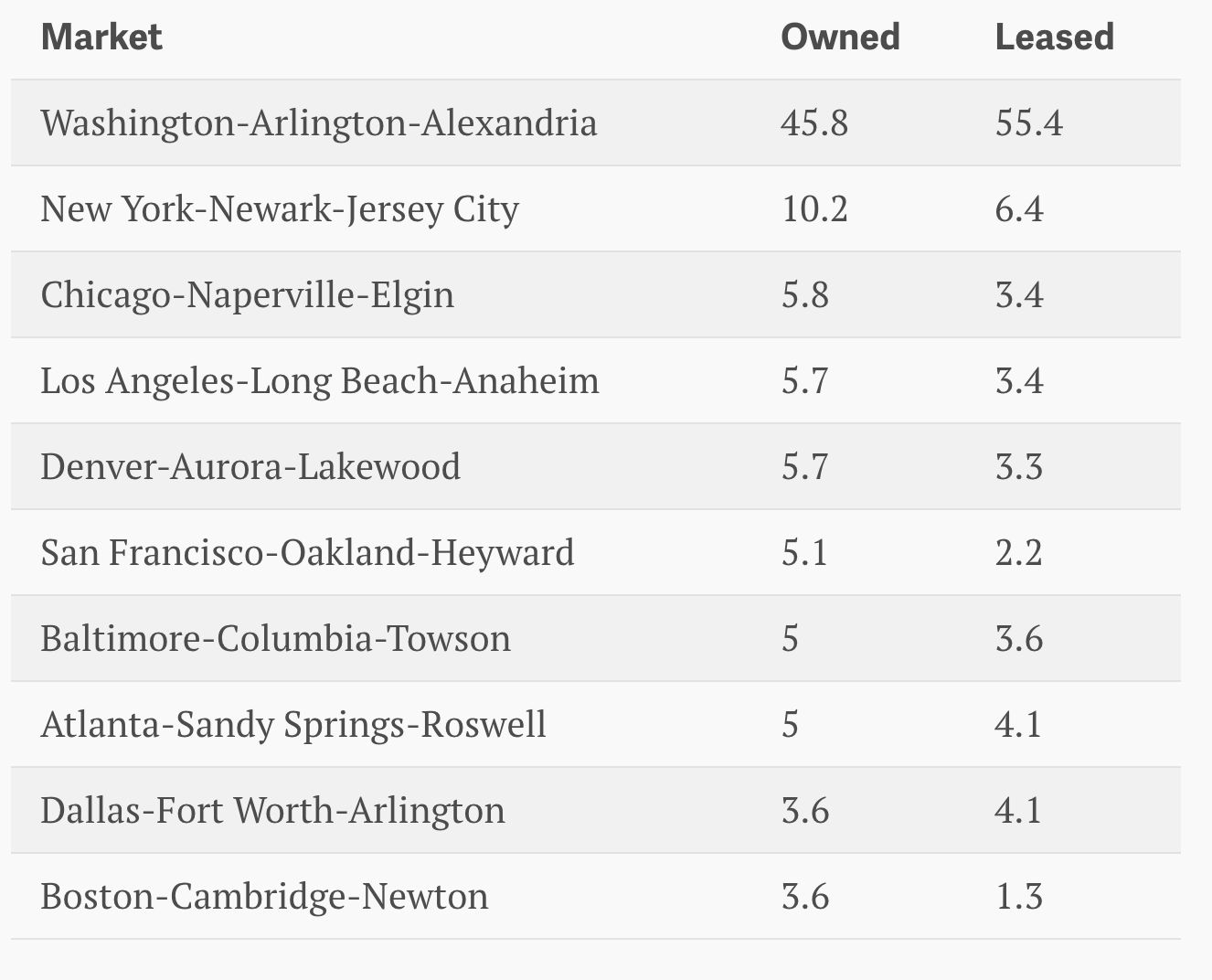
Mark Van Scyoc / Shutterstock.com
An Obscure Federal Requirement Threatens to Spoil Trump’s Plans as America’s Developer-in-chief
But few experts expect him to let the rule stand in his way.
Donald Trump is set to become America’s developer-in-chief, if only he can beat the bureaucracy.
As US president, the real estate mogul from Queens will oversee roughly 275,000 buildings owned or leased by the federal government (think offices, courthouses, border crossings, laboratories, and data centers). Together they comprise 2.8 billion square feet, or more than six times the amount of office space in Manhattan.
Trump, who began his career managing more than 14,000 apartments in Queens, Brooklyn, and Staten Island before going on to develop hotels, golf courses, and luxury housing, has a resume seemingly made for the role.
“I think there will be a stronger interest in the federal government’s real property portfolio than we’ve seen before,” says Dorothy Robyn, who as commissioner of public buildings in the Obama administration helped negotiate the lease with Trump for the Old Post Office building in Washington, now the site of a Trump hotel.
Public-private partnerships involving real estate developers are expected to be a feature of the infrastructure plans that Trump referenced on the campaign trail.
But first, he may have to discontinue a directive developed a quarter-century ago by the US Office of Management and Budget (OMB) that requires the government to pay up front—or “score”—the complete cost of a building if a lease would result in the government’s owning all or part of the property. Beyond the red tape involved, the rule limits the government’s returns on federal development projects, which means it has the potential to frustrate the deal-makers whom Trump is recruiting for his administration, and stifle the types of collaborations with private developers he has touted.
Because of reluctance by Congress to set aside funds, upfront, for the full cost of buildings, the directive forces the government to refrain from opportunities (pdf) to negotiate so-called lease-purchases and instead pay rent with no prospect of ownership. To understand what this means beyond a theoretical sense, consider the example of the US Department of Transportation’s headquarters, which opened in 2008 on a parcel southeast of the US Capitol.
The federal government selected the site in part to spur development in the area, which has since sprouted a mix of residential and commercial buildings including Nationals Park, home to Washington’s major-league baseball franchise. Because the directive barred a lease-purchase, the government sold the land to a private developer who built the headquarters building and leased it back to the government for a term of 15 years.
Robyn has estimated that taxpayers will spend $675 million to lease a building that cost about $400 million to build and receive no benefit from the rise in property values that the project fueled. The directive also prevents the government from doing deals with private companies that would finance renovations to government buildings that produce savings by consolidating space or boosting energy efficiency.
Will the incoming administration continue to let taxpayers miss out on the upside of construction projects? The Trump transition team did not respond to questions about the scoring rule or any plans the incoming administration might have for changing it. But experts already are laying odds on an executive action to roll back the directive.
“I think most people who know this world believe that administrative action could open the door to the federal government using public-private partnerships to acquire or renovate buildings,” says Robert Peck, who served as commissioner of public buildings in both the Clinton and Obama administrations and now leads the government practice area of the architecture firm Gensler.
Changing direction may force the president to pull rank with the budgeteers, for whom deviating from scoring rules can be tantamount to heresy. It may open taxpayers to new risks, when development deals don’t work out as planned. But it’s difficult to envision any of that deterring Trump if he decides he wants to take action.
“I think he will see the folly of this [rule],” Robyn says of Trump. “He knows buildings and he knows what deferred maintenance costs. It will be very interesting to see what happens when the Trump administration encounters the budget theologians.”
The first table below shows the amount of office space managed by the US General Services Administration in its 10 largest markets. All figures are in millions of square feet (on mobile, swipe horizontally to see the square footage owned or leased in each market). The second table shows the number of buildings owned or leased in each market. Data is as of Sept. 30, 2015.


NEXT STORY: Memo to the President: Staffing Your Team






